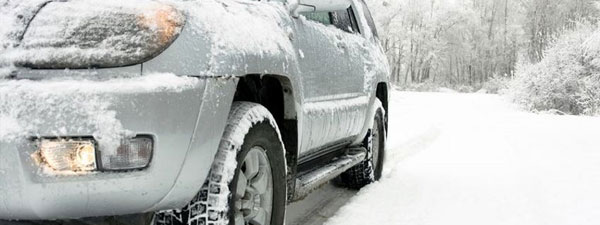Let me ask a question, “Why there is too much possibility of getting rust during winter?” The answer is: In a few parts of the country with freezing winter temperatures, drivers know that warming the cars up in the morning is an annoying task. So what they can do to defrost?
A salt and sand mixture is frequently spread over roads before or after a snow or ice storm. Salt lowers water’s freezing point, causing any ice already formed to melt even though the air temperature remains well below freezing.
Even though salt helps people travel safely during the winter months, it also has shortcomings. Saline streets can cause undercarriage damage to your vehicles unless you take extra care.
Here comes the importance of taking extra care of your vehicle during the winter. If you’re the one who travels the saline streets, we have some great tips to help protect your vehicles from the damage of road salt.
Plan Ahead:
- The best time to prevent salt damage to your vehicle is before the snow starts to fall. A little car maintenance followed by frequent car washing will keep the rust away.
- Before the winter starts, thoroughly wash every inch of your vehicle, including the undercarriage.
- Apply a meticulous coat of cavity wax, followed by a wax sealant and undercoating
- Seal the undercarriage, paying special attention to the brake and fuel lines, as these are the most vulnerable items for rust and corrosion. You can buy a rust-proofing product to do this, or you can have it done professionally.
Wash Your Car Professionally
- Keeping your vehicle as clean as possible will drastically cut down the damage done by salt and sand.
- Take your vehicle to a professional car wash twice a week.
- Have your car re-waxed and sealed when you have it washed.
At-Home Car Care Tips
- Start washing your car by spraying down your vehicle using a garden hose equipped with a high-pressure nozzle.
- Make sure to clean as much as mud from beneath the wheel walls, undercarriage, under the bumpers, and all the other areas prone to salty splashes.
- Softly scrub down using soap made especially for car washing. Use a wash mitt, never use a rag.
- If the vehicle is really salty, add a couple of tablespoons of baking soda to the wash water to help remove and neutralize the salt.
- Rinse thoroughly; make sure all the traces of soap were removed.
Dry! Dry! Dry!
After washing your car, don’t stop the process! Here are the next steps to be followed:
- Carefully inspect and dry the edges of doors, car interior and exterior including the underbodies, all hinges, plus the hood and trunk edges.
- Use good quality car rust proofing sprays on all the exterior rubber or vinyl surfaces.
- After a winter washing, don’t forget to apply a rust-proof waxing product and an additional coat of cavity wax to all exposed metal surfaces.
How to Rust Proof Waxing Your Car?
If you’re little bit familiar about auto works, then you can wax your car using the right rust proof waxing product. This waxing product is also called as the Cavity wax because it can penetrate through the cavities present all over the body of a car and protect them from rusting.
The rust proof waxing products are available at many stores and you can also buy it online. Once you get the product, follow the below steps given to rust proof it.
- Wash your car thoroughly and allow them to dry.
- Place a plastic sheet under the car to avoid the spray to drip to the floor.
- Spray cavity wax over all the area excluding the underside that you want to rust-proof using an injection pipe or extension nozzle that is usually provided with the product.
- Apply a thin layer of cavity wax before the application of underside wax.
- Leave the car untouched for 6 to 12 hours and then it is good to go.
The method of rustproofing has changed over the years, but the concept is reasonably the same: keep moisture away to prevent corrosion. It’s never too late to start rustproofing your car, so why wait? Shop at Noxudol USA and buy the best rust proof cavity wax and start rust proofing your car!

